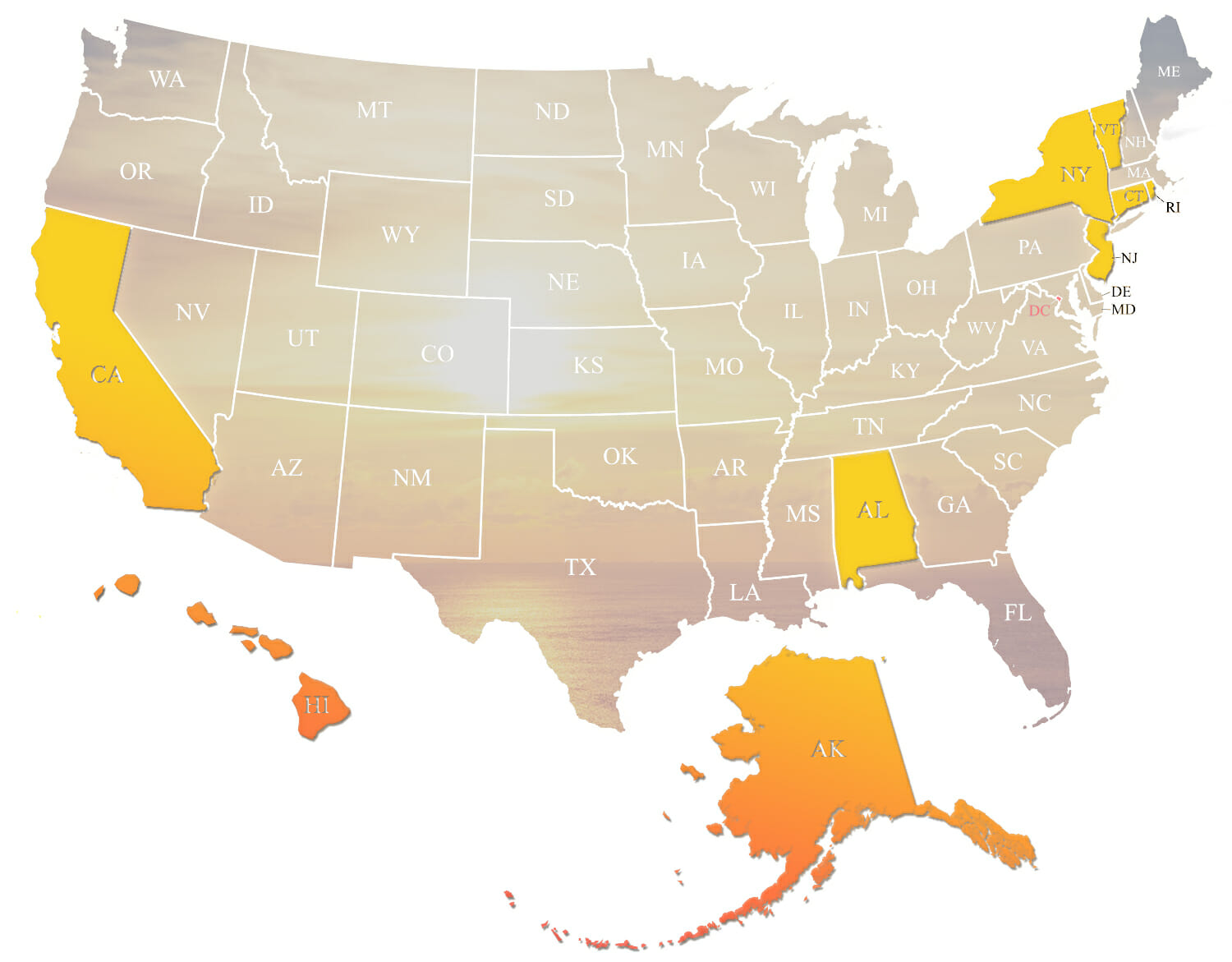Nine States Have Reduced Their Prisoner Population by 30%. What Do They Have in Common?

For the first time in decades, several U.S. states are making a concerted effort to reduce their prison populations by applying a range of policy measures, new laws, sentencing changes, and shifts in law enforcement practices.
Nine States that are Reducing Their Prison Population
The United States incarcerates more people than any other country, with over 1.4 million people locked up in state and federal jails and prisons. One in five prisoners on the planet are located in U.S. incarceration facilities. However, the Bureau of Justice Statistics recorded a 1% decline in the U.S. prison population from 2020 to 2021, a downward trend consistent every year since 2009 when the prison population reached its peak of well over 2 million.1,2
The decline in prison population is primarily the result of nine states enacting policy changes to reduce their number of prisoners. Of those nine states, some dropped their prison population significantly, as in the case of Alaska, reducing its prison population by 43% between 2006 and 2019.
All U.S. states except four (Montana, Idaho, Nebraska, and Kansas) have seen a drop in their prison population, but the nine states that saw at least a 30% drop are:3
- Alaska, 42.8% reduction; the peak year for incarceration was in 2006
- New Jersey, 40.9% reduction; the peak year for incarceration was in 1999
- New York, 40.4% reduction; the peak year for incarceration was in 1999
- Connecticut, 39.2% reduction; the peak year for incarceration was in 2007
- Alabama, 34.5% reduction; the peak year for incarceration was in 2012
- Rhode Island, 34.3% reduction; the peak year for incarceration was in 2008
- Vermont, 34% reduction; the peak year for incarceration was in 2009
- Hawaii, 31.3% reduction; the peak year for incarceration was in 2005
- California, 29.6% reduction; the peak year for incarceration was in 2006
Nationally, the overall prison population reduction rate is about 1.2% per year. Most prison reform experts have set a goal of halving the U.S. prison population, and the efforts of the nine states mentioned above should be lauded. However, if the slower trends continue in the other 37 states that have made some effort to reform their prison and criminal justice policy, it will take another half-century before incarceration figures reach a number that is half the rate they were during their peak.
What Policy Changes Did These States Make?
According to the Sentencing Project, 29 states, including the nine mentioned above, adopted reforms to reduce mandatory minimum sentencing requirements. Policymakers in the nine states also became increasingly supportive of bipartisan justice reinvestment initiatives, reducing parole revocations, establishing treatment courts for drug offenders, and developing alternatives to incarceration for nonviolent offenders.4

While many reforms have been legislative, some have been created through direct democracy, such as a successful 2012 ballot initiative in California that curbed the scope of the state’s notoriously broad “three strikes and you’re out” law. Other states have passed ballot measures to decriminalize personal-use drug possession, reduce re-incarceration for technicality parole violations, and support alternative-to-incarceration measures.
Other states implemented innovative and untested reforms to abide by growing public sentiment around reducing the prison population. Some such reforms were highly successful and were later replicated by other states, like New York’s 1997 “Merit Time Program” reform, which enabled people serving sentences for a nonviolent, non-sex crime to earn reductions in their minimum term and become eligible for parole consideration sooner by completing a range of educational, vocational, treatment, and service programs. New Jersey’s significant changes in its parole board and California’s early-release program for nonviolent offenders were other examples of criminal justice policy shifts that were innovated, that worked, and that were then replicated in other states.
Federal Changes Have Occurred, Too
Several changes have been made on the federal level as well, resulting in a reduction in the federal prison population. Federal changes also inspired state-level changes. Some such changes included the Fair Sentencing Act of 2010, which reduced the disparity in sentencing between crack and powder cocaine offenses and effectively overturned a War-on-Drug-era law that unfairly targeted Black Americans.
Other examples of federal changes included adopting the Second Chance Act in 2008, which sought to provide and fund reentry services. The U.S. Supreme Court’s 2005 Booker decision led to the Federal Sentencing Guidelines advisory and the restoration of sentencing discretion to federal judges.
Lessons for Other States
Public sentiment has shifted to a desire for less incarceration and more compassionate criminal reform programs for those requiring incarceration to improve public safety. Unfortunately, despite the reforms highlighted above and several states’ success in reducing their incarceration figures, recidivism in the U.S. is still very high.
According to the National Institute of Justice, the United States has one of the highest recidivism rates in the world, with almost 44% of criminals released returning to prison before their first year out of prison. That means the U.S. criminal justice system is not working for almost half of those who go through it despite reforms.5
To ensure prisoners receive the best services possible, states must implement educational programs within prisons, including courses that help prisoners understand why they committed crimes in the first place. When prisoners have access to evidence-based and educational reform programs and are given an opportunity to rebuild their lives and learn how to be responsible, law-abiding citizens, they are far less likely to return to a life of crime after being released.
Sources:
- BJS. “Prisoners in 2021 – Statistical Tables.” Bureau of Justice Statistics, 2022. bjs.ojp.gov
- ACLU. “Mass Incarceration.” American Civil Liberties Union, 2023. aclu.org
- USNews. “10 States With the Largest Drops in Prisoner Population.” U.S. News, 2021. usnews.com
- TSP. “Fewer Prisoners, Less Crime: A Tale of Three States.” The Sentencing Project, 2023. sentencingproject.org
- NIJ. “Recidivism.” National Institute of Justice, 2023. nij.ojp.gov




